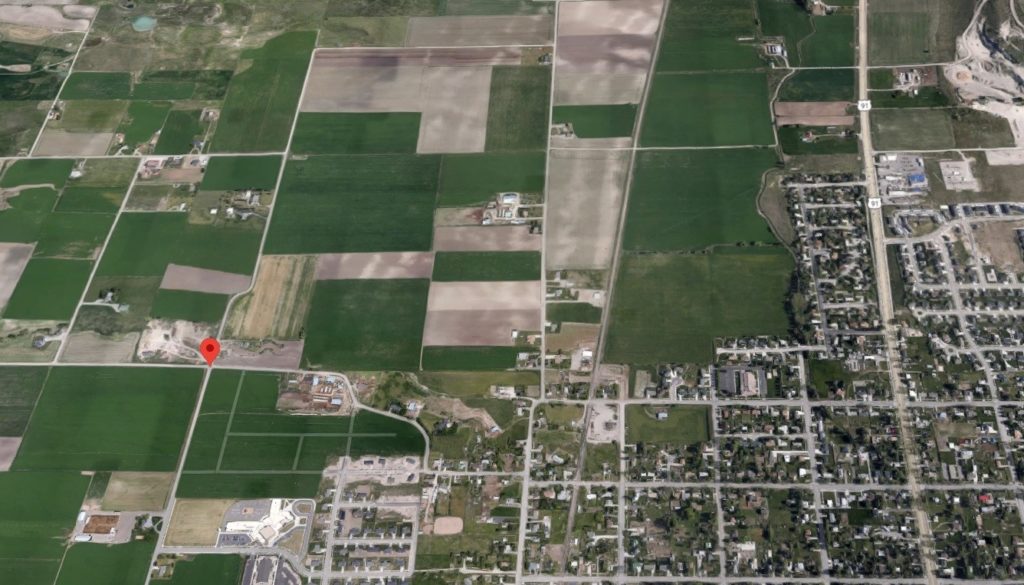A proposed 206-home development (northeast of the red marker) has been approved by the Smithfield Planning and Zoning Commission. The project now goes before the Smithfield City Council for final approval. Image courtesy of Google Maps
SMITHFIELD – Some people on Smithfield’s west side are up in arms about a proposed 206-unit housing development on 50.75 acres located northeast of 800 West on Saddleback Rd. The property on the west side of the city was zoned for one house every ten acres and the new proposed housing development is going to build a house every 10,000 feet. And that is leaving some Smithfield property owners in a dither.
The ground was annexed into the city a couple of months ago and rezoned to R-1-10, and Wednesday night the developer wanted it rezoned to R-1-10 PUD (Single Family Residential
10,000 Square Feet Planned Unit Development Overlay Zone).
“The R-1-10 PUD means the developer will work with the planning commission on additional open space to develop recreational parks, trails, trees, and special landscaping,” said Scott Gibbons, Smithfield planning commission chairman. “They could also request the homes have so much rock or other home improvements.”
The okay was given for Fox Meadows PUD and the proposal will now be sent to the city council for approval.
There is a shortage of housing in Cache Valley and across the state of Utah. There are less than 100 homes currently available for sale across the valley.
“There were some people at our meeting last night that were opposed to the development,” Gibbons said. “I get it. I understand people don’t want change, but from what I could see none of the people at the meeting live adjacent to the project.”
He said when they told the half a dozen people opposing the development they are building single family homes, not multifamily homes, apartments or town homes some of them seemed to calm down a little. The development fits within the city master plan.
Gibbons said they get a housing development proposal just about every month.
“We look over building proposals, check them to make sure they meet the requirements and make recommendations to the city council. They are the ones that make the decision,” he said. “We look at it when a property owner makes a request to make sure the project is in line with the city’s requirements.”
There are questions that need to be answered, like does the future planning of the project fit the city requirements. The planning commission makes the recommendation to the city council and they have the right to turn it down or let it go through.
“We are just an administrative body and typically we look at what the landowner wants and if it fits the city requirements,” he said. “If the landowner wants to annex property to the city or have it rezoned, we look at it to see if it is in line with what the city has on their books. We will have discussion and if everything is in place, we recommend it to the city council.”
The only time the planning committee can rezone property is at the request of the landowner. The commission can’t go change the zone of property without the request of the owner.
“It seems to me everyone likes to live in homes, I’m not sure why,” Gibbons said. “It’s a balancing act. There is always going to be somebody that has a concern, but the owners have rights, too.”
He said they try to make sure things are done correctly. There is always going to be one party that is happy and one that is not. They try to do everything by the book. They don’t have secret meetings.
“I’m not aware of anyone on the council having secret meetings with anyone outside of our advertised meetings,” he said. “I certainly haven’t.”
Gibbons understands why people are upset. They don’t like change and they may not like what their neighbor is doing.
“I get it,” he said. “I’ve had neighbors doing things I don’t think was right but, there is not much I can do about it if they are not breaking the law.”

